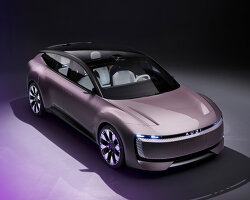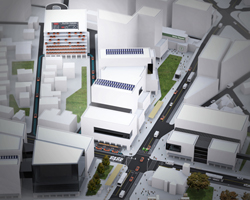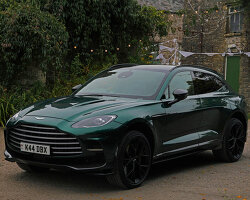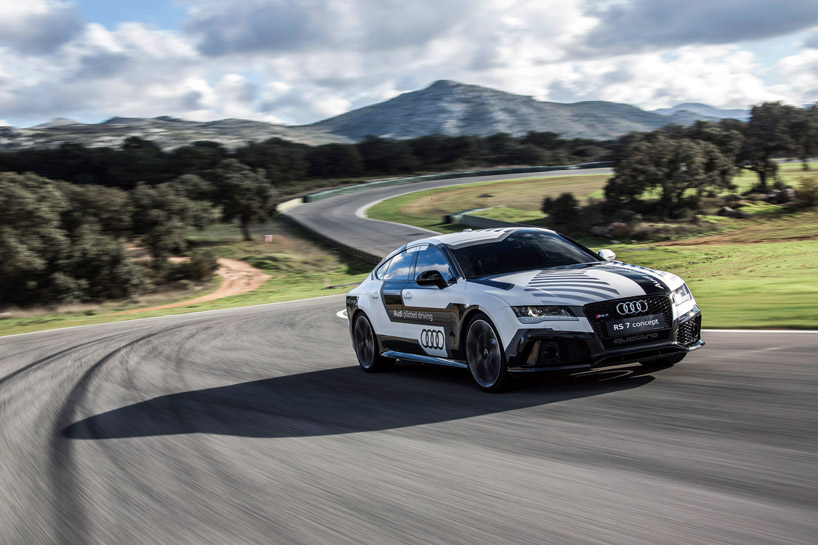
AUDI RS7 piloted driving concept car tested by designboom on ascari race track
(above) the car on the ascari race track without a driver
image courtesy AUDI AG
after completing the legendary grand prix track in hockenheim during the german touring car masters (DTM) season finals this year, AUDI took its autonomous RS 7 piloted driving concept car to spain to lap the challenging ascari race resort circuit. located in the breathtaking scenery of ronda, andalusia, the track is the longest in the country at 5.5 kilometres, and stands at a width of 12.2m, featuring 26 turns. ascari offered the ideal venue for testing the automotive company’s piloted driving technology — the meticulously designed car path boasting highly complex curves that allowed engineers to push their driving systems to the absolute limit. taking to the road, the RS7 piloted driving concept car completed the course at a racing speed of up to 205 km/h – all of course, without a driver.

ascari race resort, spain
image © designboom
designboom joined the exclusive event in spain to preview and experience, first hand, the pioneering breakthroughs of AUDI’s autonomous driving. two cars, ‘AJ’ and ‘bobby’ — AUDI piloted driving engineers named them after two famous indy 500 winners (AJ foyt and bobby unser) — ensured guests witnessed the precision of the car’s intelligent on board computing system, entirely under software control. for the very first time, 25 carefully selected guests from the worlds of science, media, music and the arts were able to access the inner sanctum of automotive research. a custom built camera system recorded the experience of each piloted ride from inside and outside the car.
designboom editor anita hackethal takes a ride in the passenger seat of RS7 piloted driving concept car ‘AJ’
video © AUDI piloted driving lab
designboom editor anita hackethal on her experience as a passenger of ‘AJ’:
‘it felt like I was in a human-sized remote control car, quite surreal. it was strange at the beginning, but quickly got used to the sensation. even though there was no driver, I somehow felt very safe. ‘AJ’ knew what it was doing and had everything under control. strangely, the car became more human to me, as it was suddenly deciding on its own, which direction to go without the influence of a human being. it was definitely fun!‘

AUDI’s RS7 piloted driving concept car clearing the numerous turns of the ascari race track
image courtesy AUDI AG
prof. dr. ulrich hackenberg, board member for technical development at AUDI AG elaborates on the direction the company is taking towards autonomous driving and car safety into the future:
‘we are pressing forward with one of the most important trends in the automotive world with our technical solutions for piloted driving. we presented the sheer fascination of this development at the DTM race in hockenheim. now we demonstrate just what this technology platform is capable of on a circuit that is famous for an even more challenging profile with a wide variety of bends and chicanes. this will clearly reinforce the technical achievements of the AUDI engineers once more.’

making headway on the racetrack
image courtesy AUDI AG
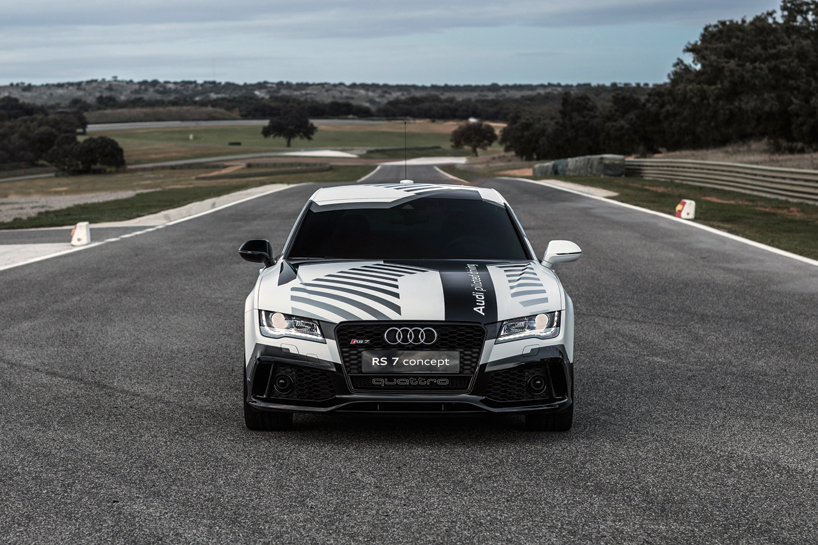
image courtesy AUDI AG
‘the feeling that we wanted to give to participants of this event [at ascari] is how it feels to drive whilst sitting on the passenger seat when the car is actually empty. it drives very precisely and you quickly get used to it. somehow you build some trust and then you eventually start talking to the car — it seems like ‘bobby’ and ‘AJ’ have some kind of soul. even though they are built with the same technology, they are both different,’ comments thomas müller, AUDI head of development of braking, steering and driver assistant systems. ‘piloted driving is not about developing cars without a driver inside, this is not our strategy. we are trying to find solutions for different situations such as driving in traffic jams or optimizing parking spaces with piloted parking, etc.’

profile of the vehicle
image courtesy AUDI AG
both piloted driving concept cars were equipped with cameras installed at their front and rear, which allowed them to record and map key points on the road and in the surrounding landscape. each time the car circled the track, these plotting points were compared and aggregated to reconfirm the vehicle’s accurate position on the road. subsequently, the car learns to recognize its environment and adjust its behavior accordingly. even though both RS 7 are built with the same system and technology, they each seem to have developed their own character — whilst ‘AJ’ handles the curves a bit more aggressively; ‘bobby’ drives a bit faster, but safely navigates around the track.

AUDI RS 7 concept car ‘AJ’
image © designboom
the visual recording equipment employed on this occasion are part of a project that is being carried out by studio kram/weisshaar. after several collaborations with AUDI over the past few years (including ‘outrace’ and the ‘AUDI R18 ultra chair‘), the duo once again teamed up with the automotive company to document the human experience of being in a riderless car on a race track. kram/weisshaar developed an interior and exterior camera system that directly captured the emotional moments of the passenger driver taking a drive around ascari — everything happening inside the car and in its surrounding recorded in HD quality, with all data computed inside the trunk. to further enhance the experience of travelling in an autonomous car at a speed of 200mph, they brought an editing team and they set-up an onsite lab to offer more insight into how the technology behind the vehicle.
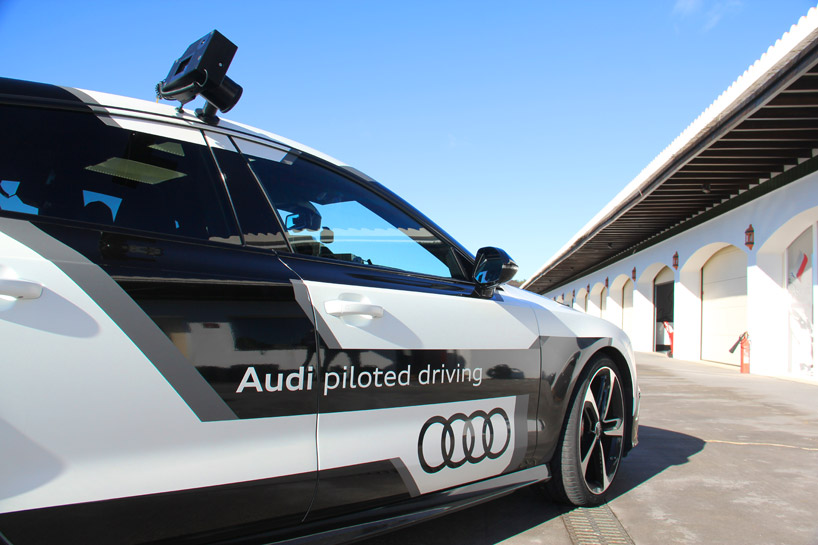
view of a camera installed on the AUDI RS7 piloted concept car
image © designboom
the custom-built media capture system features seven high-definition cameras records the experience inside and outside the car. the setup includes rugged CNC-milled aluminium camera enclosures fitted out with full frame CMOS sensors and state-of-the-art leica lenses. designed to work as an extension of the highly-refined optical and physical sensors of the vehicle, it acts as the nerve-center of the AUDI piloted driving technology. three screens installed in the dashboard visualize real-time data gathered during each lap directly from the autonomous vehicle’s sensor systems.

one camera was directed towards the passenger’s mirror
image © designboom
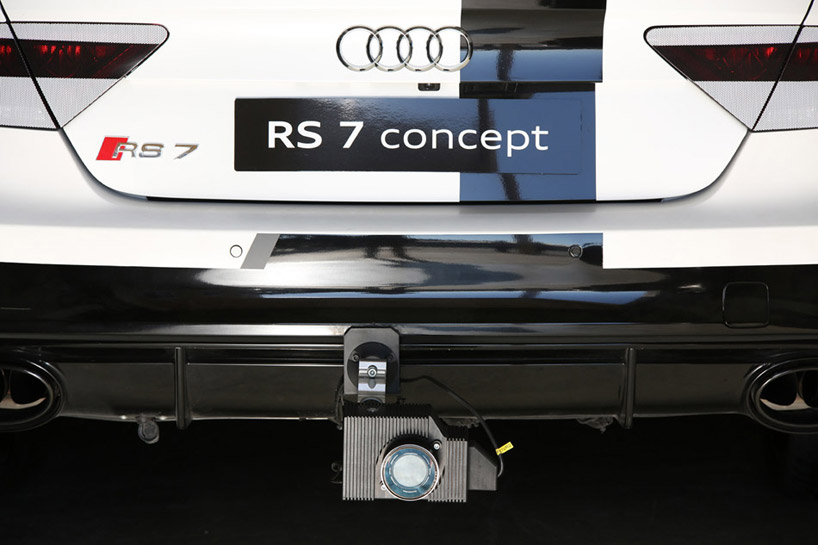
rear camera recorded the surrounding
image © david levene / courtesy AUDI AG

AUDI piloted driving mobile research lab by kram/weisshaar
image © designboom
the second component of the experience comprises a mobile research lab designed by clemens weisshaar and reed kram. this consists of an office and workshop space featuring a display specimen of the AUDI quattro drivetrain along with the key components of the carís autonomous systems. as the testing process moves on to different track locations, this lab will be home to the team of researchers behind the piloted driving initiative lead by thomas müller, head of driver assistance systems.

vehicle body with camera installed
image © designboom

AUDI RS 7 concept car equipped with cameras
image © david levene / courtesy AUDI AG

computer systems and hardware in the car trunks process information from the cameras, GPS data and driving ability
image © designboom

computing data in the trunk
image © david levene / courtesy AUDI AG

technical illustration showing the interior and exterior camera system developed by kram/weisshaar
image courtesy kram/weisshaar

image processing: cameras record and map key points on the road and in the surrounding landscape
image courtesy AUDI AG
the piloted RS 7 concept car is the culmination of years of research into assisted driving safety measures and driverless technology in AUDI’s pioneering labs. the car negotiates even the tightest corners at optimum speed and positioning, working at the upper limit of its 560 horsepower capacity.

technical illustration of system components
image courtesy AUDI AG
for orientation, the car uses state of the art technology including sensors, computer code, cameras and GPS data to map of the distance of the racetrack, its edges, altitude changes and road conditions in order to complete each lap of the racetrack as cleanly as possible. the calculations take into consideration the vehicle’s own dimensions, mass and force, and the ideal speed and breaking path required to safely navigate each corner along the track at optimum performance levels. additionally, 3D cameras in the car filmed the track, and a computer program compared the cameras’ image information against a data set stored on board.
interview with clemens weisshaar and reed kram
video © designboom
with this project, kram/weisshaar was working very close together with AUDI’s TE department (technical development) – more specifically the team behind AUDI’s piloted driving concept car lead by thomas müller and peter bergmiller. the launch of the AUDI piloted driving lab examines the full potential of AUDI’s technological research efforts as well as the interaction between man and machine.
peter bergmiller, development driver assistance systems AUDI AG on the car’s technological progressions
video courtesy AUDI AG
driving the future
the piloted concept car provides a glimpse into the future of driving. the autonomous RS 7 combines AUDI’s passion for an exhilarating ride with its commitment to increased driver safety and comfort via its expanding range of assistive technologies. the two autonomous vehicles, ‘AJ’ and ‘bobby’, are vanguards of the type of intelligent, intuitive and connected driving that vehicles of the future will be capable of. AUDI has long been a driving force in the area of highly automated driving. the brand’s development efforts have produced a number of spectacular feats – on public roads, on the race track and even on a salt bed.
2009: bonneville salt flats
in fall 2009, AUDI took to the bonneville salt flats in utah, USA, with a driverless AUDI TTS. driving in precise curves, the white coupe carved the brand’s four rings into the salt bed. it also set a new speed record for piloted driving cars of 130 mph (approx. 210 km/h). as homage to former AUDI rally driver michèle mouton, the technology platform was dubbed ‘shelley’. its specific data technology was developed jointly by AUDI, volkswagen and the center for automotive research at stanford university in california.
2010: pikes peak
the next year, the piloted driving ‘shelley’ conquered the legendary pikes peak mountain race circuit in colorado, USA. the vehicle covered the 20 kilometer (12.4 mi) course with a total of 156 corners in roughly 27 minutes, reaching a top speed of 45 mph (72 km/h). navigation was already via differential GPS and accurate to just a few centimeters.
2012: thunderhill race track
AUDI garnered its initial experience with the AUDI TTS on a race track – the thunderhill race track north of sacramento, california. the lap time on the roughly three-mile (nearly five kilometers) course was under 2 minutes and 30 seconds. the tests were focused on how a piloted driving car behaves at high loads and under extreme conditions.
2013: las vegas
the authorities in the US state of nevada made the AUDI the world’s first automobile maker to receive a permit to operate piloted driving cars in public traffic. in january 2013 and 2014, the brand presented new systems for piloted driving in traffic jams and for piloted parking at the international consumer electronics show (CES) in las vegas.
2014: florida and california
AUDI rapidly expands its testing competence for piloted driving in the USA. this summer, the brand was once again the world’s first automobile maker to conduct a public test on the lee roy selmon expressway outside tampa, florida. in fall 2014, the company received the first license under the new regulations in california, where test drives on the freeways are now generally permitted.
AUDI piloted driving
video courtesy AUDI AG

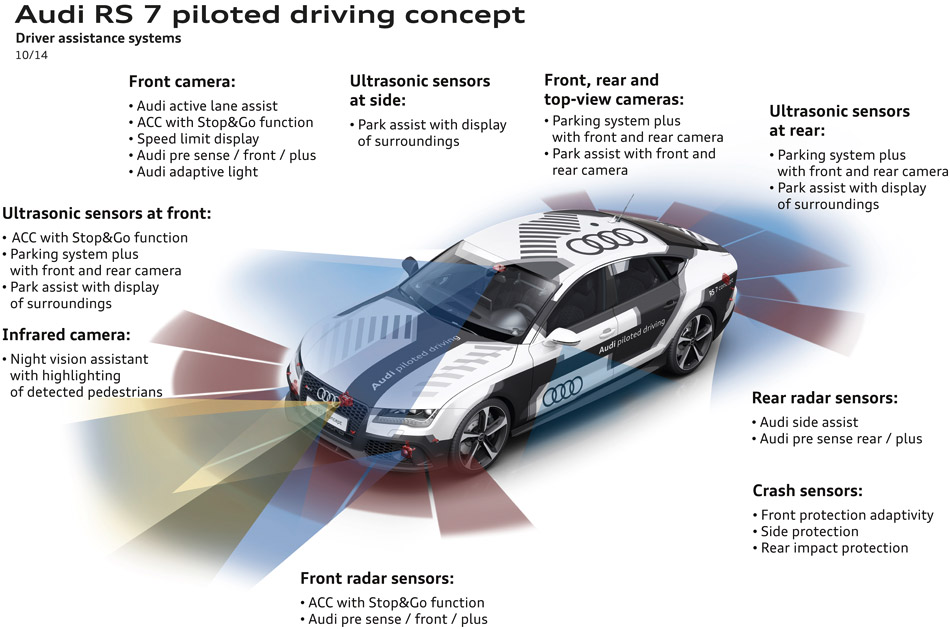








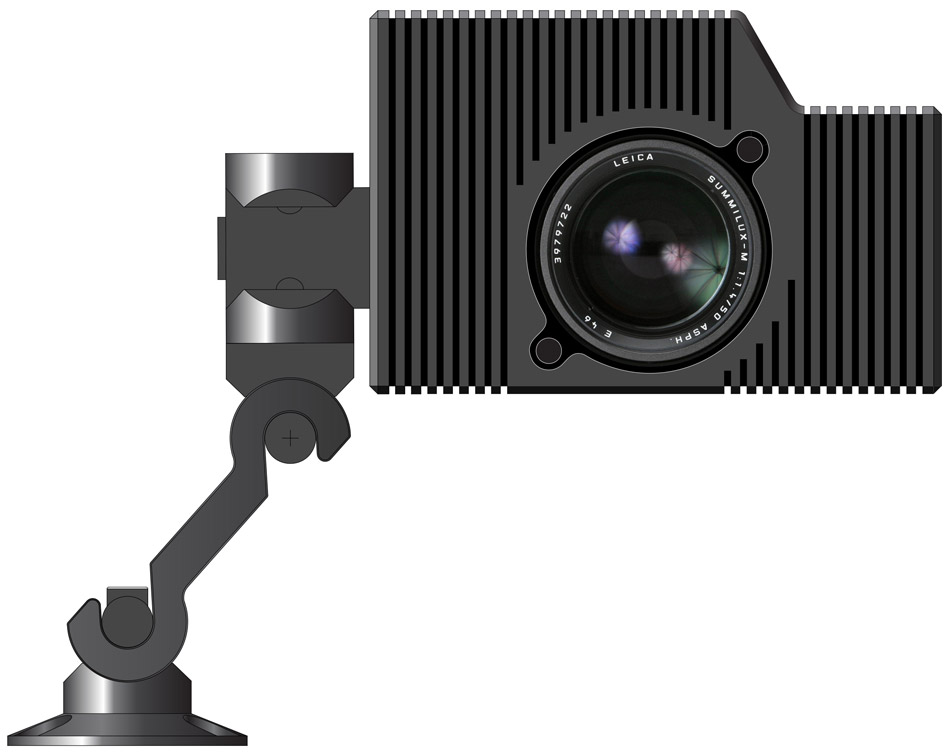
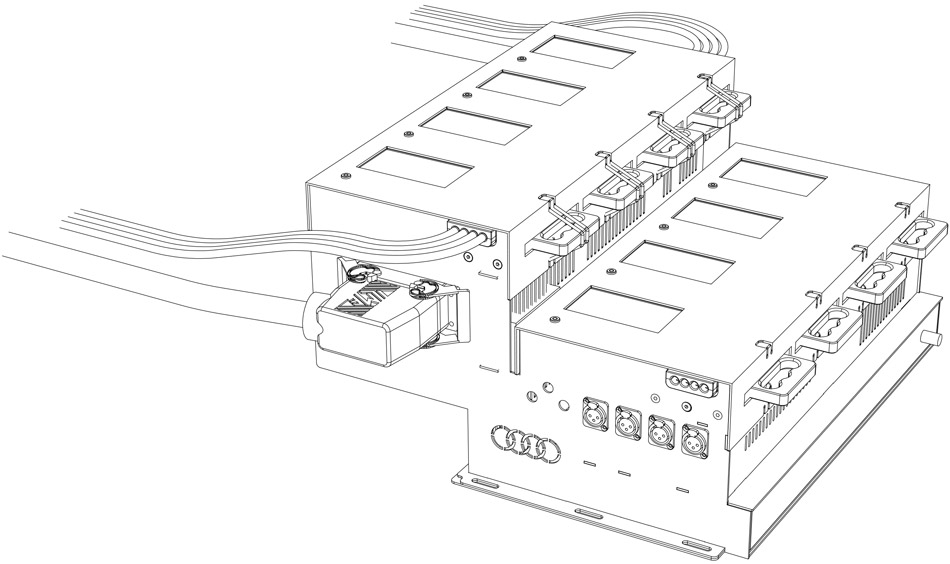



AUDI (138)
AUDI piloted driving program (5)
automotive test drives and reviews (58)
kram/weisshaar (12)
PRODUCT LIBRARY
a diverse digital database that acts as a valuable guide in gaining insight and information about a product directly from the manufacturer, and serves as a rich reference point in developing a project or scheme.

